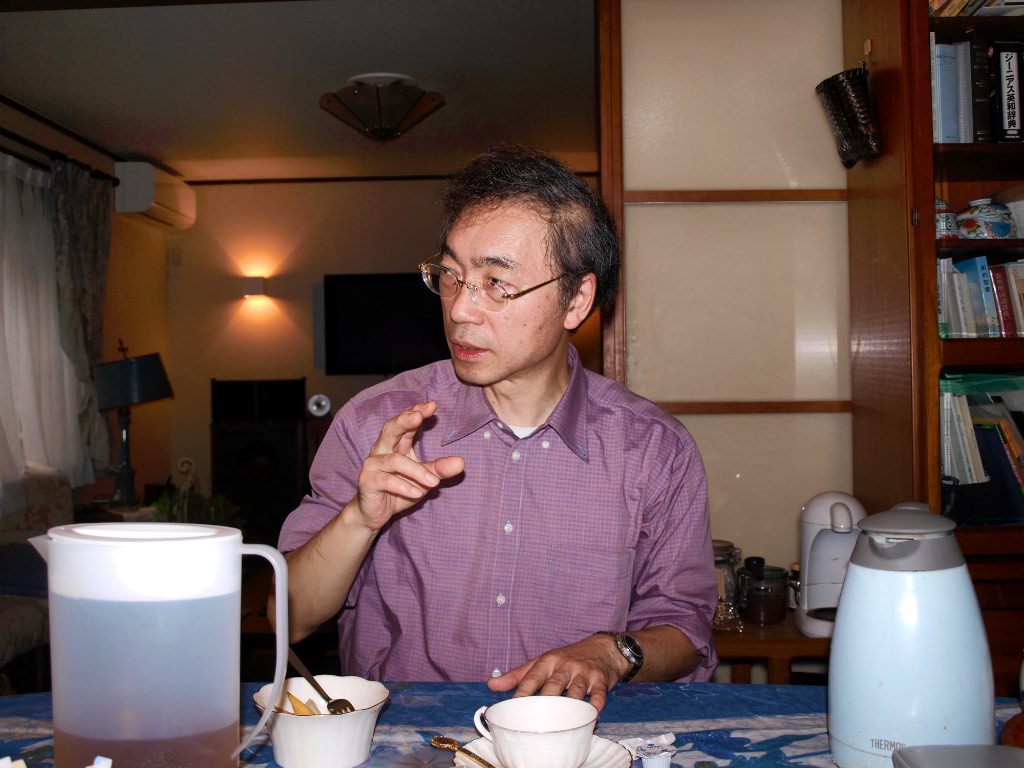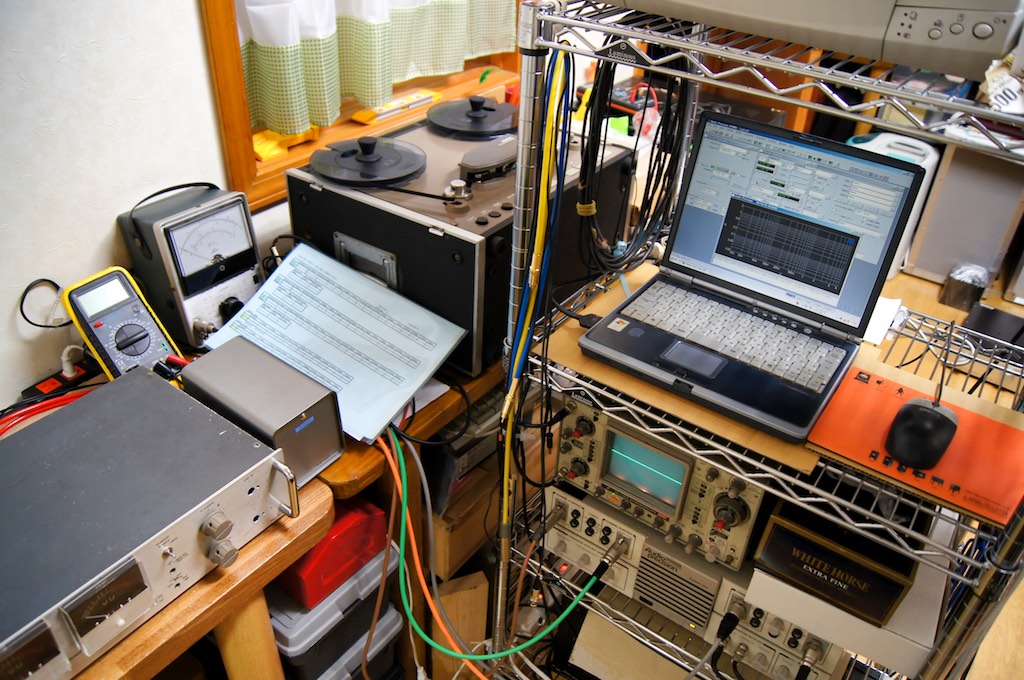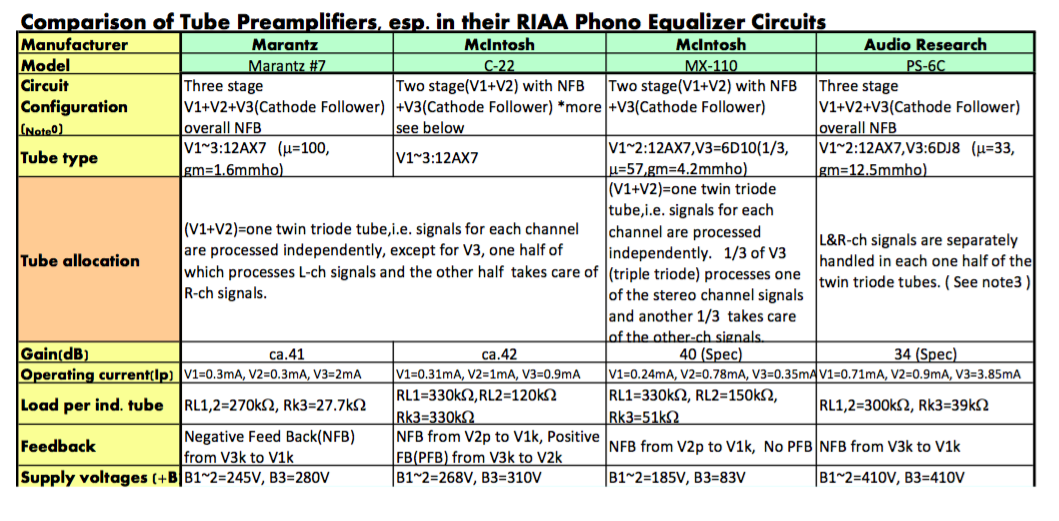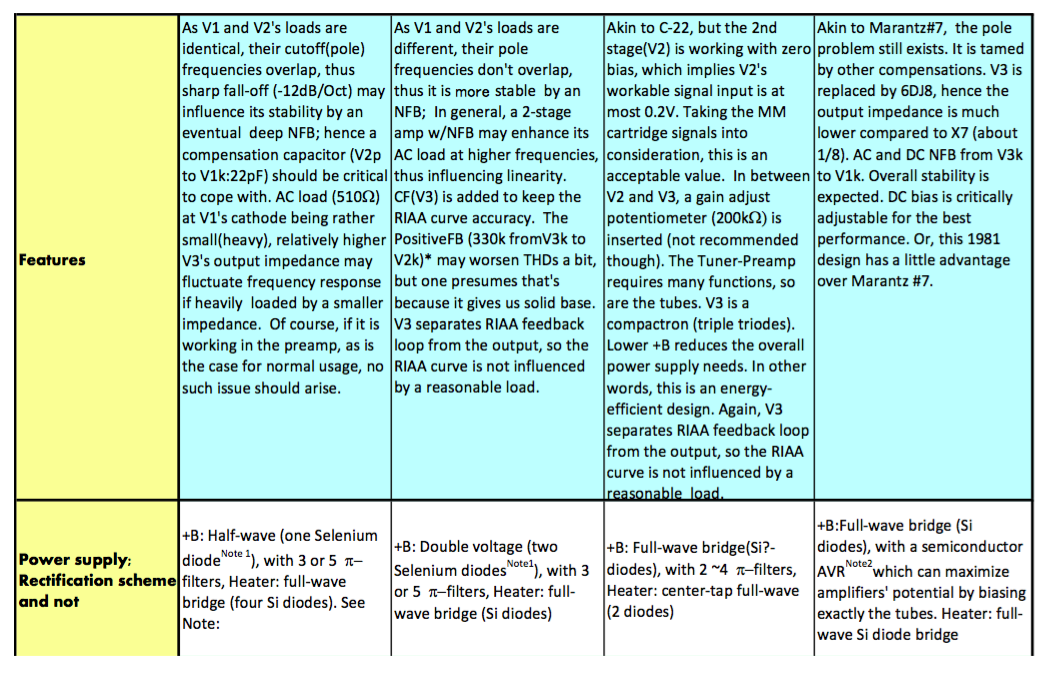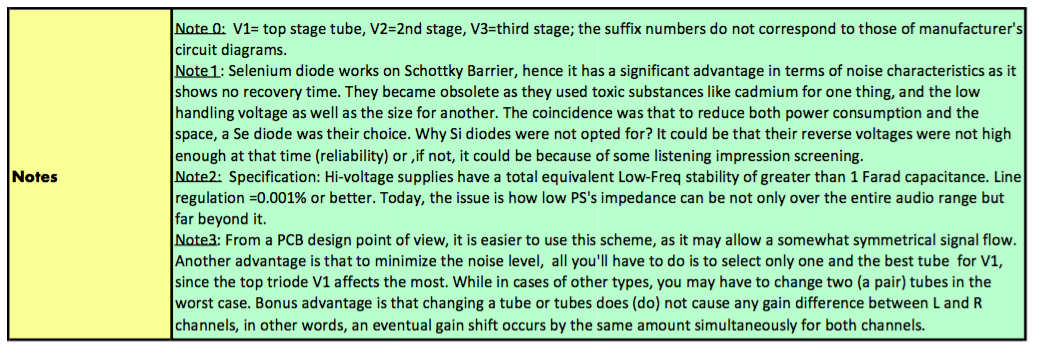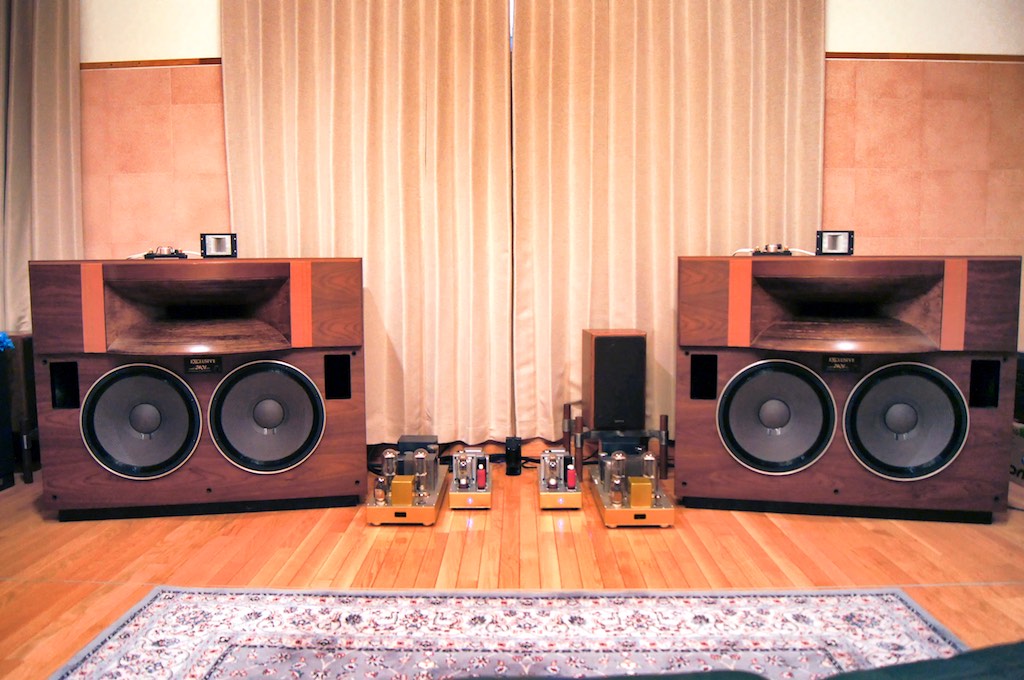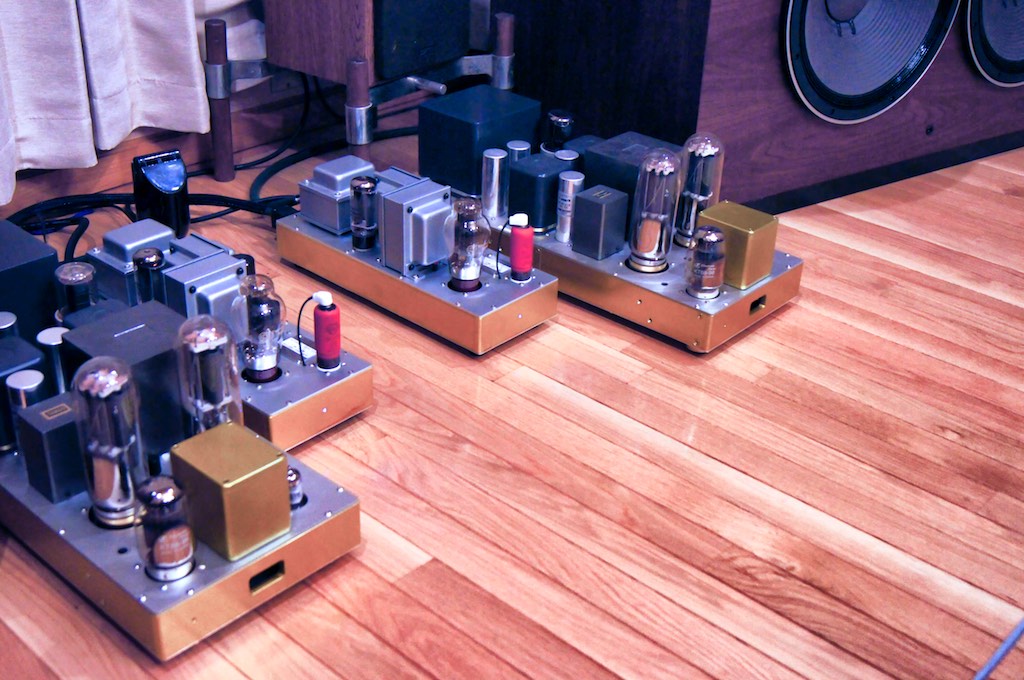It's always a delight to hear from Yazaki-san, and I got a very nice email from Yazaki-san introducing his good friend, Kato-san.
"I’m so happy to introduce my good old friend, Kato-san to you and Ron-san. Kato-san had been working in the research and development division of PIONEER until 10 years ago, and at the same time I had long worked in the product development division. Therefore we didn’t have the chance to work in cooperation with each other in the company, but thankfully we have the same taste for the hobby of building up tube amplifiers and enjoying the sound. So many engineers were working in PIONEER, but actually there were only a few tube enthusiasts, and so Kato-san and I became friends with each other."
"Kato-san has been an excellent electronics leader for semiconductors, but personally has long loved making tube amplifiers. You could see his personal measurement system, Audio Precision analyzer, in the attached photo. We could have the chance to see such high-value measurement in the engineering division of large electric company, but Kato-san bought it only for his own use. I’d rather say that Kato-san would be a theoretical engineer, but I might be another sensuous type engineer, and so we have long term good relationship with respects each other."
"When I started the development of a new phono EQ in SPEC in early 2011, I asked Kato-san to work with us to develop the basic circuit design. When Kato-san retired from PIONEER in 2006, he had gone back to his hometown, Hakodate in Hokkaido, the north district of Japan, and so Kato-san came back to our office once a month and we discussed the design, and occasionally Kato-san, Banno-san, and I did listening tests at my house for confirming the status of design, or selection of the parts. We had experienced the same episode at the same time, and with Banno-san’s dedicated effort on the printed circuit board design, and Kato-san’s patient research work for most suitable circuitry and part’s values, our phono EQ, the REQ-S1EX was available in the market early 2013, just three years ago."
"Kato-san is so gentle and has rare pure personality with strong passion for tube amplifier, same type of kindred-sprits like as Jeff-san and Ron-san."
It is always a pleasure to meet a kindred spirit in this wonderful audio hobby we share, and it is a delight to be introduced by Yazaki-san to his good friend, Kato-san!
Greetings, Kato-san, from Ron & Jeff in Washington State in the US, and welcome to Jeff's Place!
I also wanted to mention that Kato-san is not only an expert on modern phono stage design like the REQ-S1EX he developed for Yazaki-san, but he is also an authority on vintage phono preamplifier circuits like the Marantz 7, McIntosh MX110, McIntosh C22, and Audio Research PS-6C, which I have been referring to in my blog posts.
Have I mentioned that Yazaki-san sent Ron-san an 'Audio Research SP-6C Adventure Kit' to hot-rod his SP-6C? You will be hearing more about it in due time.
Kato-san kindly put together a table comparing the design of those classics for us to enjoy. Thank you Kato-san!
Yazaki-san also sent along a few photos of the hi-fi system that Kato-san listens to at home, and it is spectacular!
I asked Kato-san if he could tell us a little more about his hi-fi system and the amplifiers he built for it.
In the photos you can see 2 pairs of mono amplifiers that Kato-san built for his home system, a pair of 845 push-pull monaural amplifiers & a pair of 300B monaural amplifiers, and they are incredible!
The larger pair of amplifiers are Kato-san's 845 push-pull mono amplifiers that are rated for a maximum of 45W. The tube complement is “6N45P (single triode) + KT88 (triode op.) + IST + 845 PP (self-bias), 5R4 plus diodes”. Kato-san says about them, " I jokingly named the 845 monos as the “Battleship Yamamoto” as the pair of amps consume about 500W of power! I don't use them often because they are environmentally unfriendly, but I love their sound quality."
The smaller pair of amplifiers are Kato-san's 300B mono amplifiers that are rated for a maximum of 10W. The tube complement is an “EF37A + 300B (fixed bias), and 5U4GB”. Kato-san says, "There is nothing to write home about, as the circuit is just a copy of the WE91B amplifier. I’ve built earlier two 300B single stereo amps, one of which is a famous Loftin-White circuit. I soon gave this up because of the excessive heat during a summer season in Saitama, next to Tokyo! Yazaki-san advised me to built a WE91 type. An European pentode EF 37A replaces a pentode WE310A as this one was almost unaffordable for me, and that I thought this could not be the amp for the Exclusive 2401W loudspeaker system anyway. This simple circuit however provides unexpectedly comfortable sound quality. A bunch of data showed rather poor characteristics compared to other amplifiers, but its simplicity is the ultimate sophistication! To date, this pair is driving my huge loudspeaker set you see in the photos. They excel in their reproduction of the human voice, and with ancient musical instruments, to name a few."
Those incredible loudspeakers you see in the photos are Kato-san's Pioneer Exclusive 2401W.
Kato-san told me that the frequency response of the Exclusive 2401W loudspeakers is 29Hz~20kHz, and each Exclusive 2401W uses a pair of 4-Ohm 40cm (15.7") woofers, with a 16-Ohm TAD TD4001 4-inch driver in a Western Electric style horn, and a crossover frequency of 650Hz. They have a sensitivity of 98dB/m/W, with a max SPL rating of 126dB/m, with a maximum nominal input of 300W (and instantaneous input power of 600W), and weigh 145kg each.
Kato-san says, "Introduced in 1983, the Exclusive 2401W loudspeaker system was developed in the engineering department by two of my colleagues, in collaboration with Bart Locanthi (1919-1994), who had joined Pioneer as a consultant, and later became the VP in the Pioneer North America Lab. I was asked to translate for Bart since then (around 1975). We both were worked on digital audio development later on, and had been good friends until Bart passed away in 1994. Bart built loudspeaker systems as a hobby using analog computers to improve their quality, which eventual led him to the JBL company."
"Bart's concept was to build a system using only two transducers. Everyone laughed at first, except a team leader, Shozo-Kinoshita (now president of Rey-Audio). By careful examination and simulation, it was deemed to be feasible. The TD4001 4-inch compression driver used in the design has a special Beryllium diaphragm that extends the high-frequency range up to 20kHz. My colleagues at the lab made this happen by evaporating Beryllium on a copper baseplate, which was then removed after the Be layer formation. The efficiency of the driver is about 110dB/m/W, and you can even hear it play by applying an MC phono cartridge output directly to it without any amplification at all! The horn is a Western Electric descendant. You can hear the piano strings completely fading away. This is the piano as it should be."
"I later added a ribbon tweeter, the PT-R7III (the third generation), whose high-frequency range extends from about 20kHz to well over 100kHz. The PT-R7III has an efficiency of 97.5dB/m/W, and they are so efficient that they are added on top of the loudspeakers without attenuation. One may say, “Hey, you can’t hear 20kHz or above!”, but we persuaded critics otherwise by demonstrations from the good age of analog hi-fi. During the dark middle-age of “early” digital audio their raison d'être faded, except for those who love to play records, but now with the advent of “high-resolution” digital I am hoping that they will gain popularity again. The difference is so great that you can perceive a very natural virtual image from the sound field."
"Kinoshita-san, a good friend of mine too, told me that, " Your Exclusive 2401W loudspeaker system revealing of any small change in your electronics, from the phono pickup, the cables, or anything in the amplification chain, you name it!"
Kato-san said, "It should be noted that the combination of a tube amp with an efficient horn driver loudspeaker system sounds the greatest ever. A great majority of people cannot believe these loudspeakers are driven by only 1W of power at most."
I am really impressed with your home hi-fi system, Kato-san! It is wonderful!
It is such a pleasure to meet another kindred spirit in our beloved shared hobby, thank you for sharing your passion for music & hi-fi with us, Kato-san!




